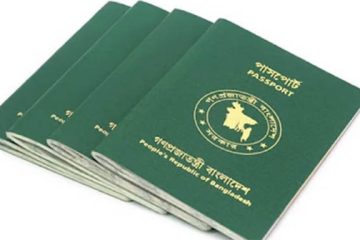Eminent painter and printmaker Safiuddin Ahmed passed away at Square Hospital in Dhaka early on Sunday. He was 90. He had been suffering from old age complications. He
was admitted to Square Hospital when he suddenly fell sick on Tuesday (May 17) evening. Later, he was put on life support as his condition deteriorated.
The artist has left behind his wife, two sons, one daughter and a host of relatives and admirers to mourn his death.
His mortal remains will be kept at his Dhanmondi residence (Road-4, House-21) from 8 am to 10 am today. Then the body will be kept at Central Shaheed Minar, from 10 am
to 12 pm. It will be taken to Charukala (Faculty of Fine Arts, University of Dhaka) at 1 pm.
He will be buried at the Mirpur Martyred Intellectuals Graveyard.
Safiuddin was born in 1922 in Calcutta (now Kolkata), India. He was a student of Calcutta Government School of Art and graduated from the institute in 1942. After
Partition in 1947, Safiuddin left Calcutta for Dhaka, where he found himself caught up in a movement to set up the first art institute in the then East Pakistan. He
was a friend and colleague of Shilpacharya Zainul Abedin. He was one of the founders of Dacca Art College (now the Faculty of Fine Arts, University of Dhaka). From
1948 to 1979, he served as head of the department of printmaking at the institution.
Safiuddin’s art has mainly focused on rural panorama, pastoral life, landscapes, memories of 1971, Language Movement, floods and other natural calamities as well as
Santal life.
Safiuddin was particularly known for his woodcut engraving. He devoted much time to a single piece of painting and print. Black is the predominant aspect in most of
his works. From the beginning, the maestro had been experimenting with black and its mysterious tones, tenors and layers of colour. Most of his colours look muted and
the message has always been one of peace and harmony as he envisaged it for the future. His paintings are technique-oriented as well. Line is another essential part of
his paintings. His lines have created a distinct language where one can learn about his perseverance, longing and devotion to art.
Famous for his reserve and soft-spoken nature, Safiuddin lived the life of a recluse, away from the crowd and noise that accompany fame, which he never hankered after.
Some of his outstanding achievements as a young artist included the President’s Gold Medal (1945) by Academy of Fine Arts, Calcutta; first prize in the category of
black and white in International Contemporary Art Exhibition, New Delhi (1946); first prize in the category of black and white (etching and drawing) in Inter-Asian Art
Exhibition in New Delhi (1947) and Patna Maharaja’s Gold Medal (1947). He was a proud recipient of the Ekushey Padak and Shadhinota Puroshkar.
-With The Daily Star input




















